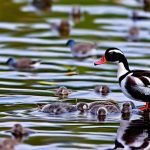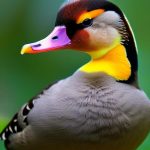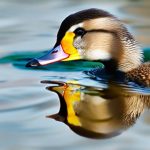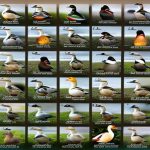Breeding areas for migratory birds play a crucial role in the survival and success of these avian species. These areas provide the necessary conditions for birds to mate, lay eggs, and raise their young. The availability of suitable breeding areas directly impacts the reproductive success of migratory birds, which in turn affects the overall population dynamics of these species. Additionally, breeding areas serve as important sites for genetic diversity and the maintenance of healthy populations. Without adequate breeding areas, migratory bird populations would struggle to sustain themselves and could face a decline in numbers.
Furthermore, breeding areas are essential for the continuation of migratory bird species. These areas provide a safe and secure environment for birds to carry out their reproductive activities, ensuring the next generation of birds can be successfully raised and prepared for migration. The loss or degradation of breeding areas can have detrimental effects on the long-term survival of migratory bird populations, as it disrupts their natural life cycle and reproductive patterns. Therefore, protecting and preserving breeding areas is critical for the conservation of migratory bird species and the maintenance of healthy ecosystems.
Key Takeaways
- Breeding areas are crucial for the survival of migratory birds as they provide a safe space for nesting and raising their young.
- Ideal breeding areas for migratory birds are characterized by abundant food, suitable nesting sites, and minimal disturbance from human activities.
- Threats to breeding areas for migratory birds include habitat loss, pollution, climate change, and human disturbance.
- Conservation efforts for breeding areas include habitat restoration, protected area designation, and community engagement in bird-friendly practices.
- Degradation of breeding areas can lead to population declines and even local extinctions of migratory bird species.
Characteristics of Ideal Breeding Areas for Migratory Birds
Ideal breeding areas for migratory birds share several key characteristics that are essential for the successful reproduction and survival of these avian species. Firstly, suitable breeding areas provide an abundance of food resources, such as insects, seeds, and other small prey, to support the nutritional needs of breeding birds and their offspring. Additionally, these areas offer adequate nesting sites, including trees, shrubs, and other vegetation that provide shelter and protection from predators.
Moreover, ideal breeding areas are characterized by the presence of suitable habitat for courtship displays and mating rituals, as well as ample space for nesting and rearing young. These areas also offer a favorable climate and environmental conditions that support the growth and development of young birds, including access to water sources for drinking and bathing. Furthermore, ideal breeding areas are free from human disturbance and anthropogenic activities that could disrupt the natural behaviors of breeding birds.
Overall, ideal breeding areas for migratory birds provide a combination of food, shelter, nesting sites, and environmental conditions that are essential for the successful reproduction and survival of these avian species. Protecting and preserving these characteristics is crucial for maintaining healthy populations of migratory birds.
Threats to Breeding Areas for Migratory Birds
Breeding areas for migratory birds face a range of threats that can negatively impact the reproductive success and survival of these avian species. One of the primary threats to breeding areas is habitat loss and degradation due to human activities such as urbanization, agriculture, deforestation, and infrastructure development. These activities can result in the destruction of critical nesting sites, loss of food resources, and fragmentation of habitat, making it difficult for migratory birds to find suitable breeding areas.
Furthermore, pollution and contamination of breeding areas pose significant threats to migratory birds, as exposure to toxic substances can harm adult birds, eggs, and nestlings. Pesticides, herbicides, and other chemical pollutants can have detrimental effects on the health and reproductive success of breeding birds, leading to population declines and genetic abnormalities. Additionally, climate change is altering environmental conditions in breeding areas, affecting the availability of food resources, nesting sites, and suitable climate for raising young birds.
Moreover, human disturbance in breeding areas, such as recreational activities, tourism, and infrastructure development, can disrupt the natural behaviors of breeding birds and lead to increased stress levels, reduced reproductive success, and abandonment of nesting sites. These threats collectively contribute to the decline of suitable breeding areas for migratory birds and pose significant challenges to their long-term conservation.
Conservation Efforts for Breeding Areas
Conservation efforts for breeding areas focus on protecting and preserving critical habitats for migratory birds to ensure their reproductive success and long-term survival. One key conservation strategy is the establishment of protected areas and wildlife reserves that safeguard important breeding habitats from human disturbance, habitat loss, and degradation. These protected areas provide a safe haven for breeding birds to carry out their reproductive activities without interference from human activities.
Additionally, habitat restoration projects aim to rehabilitate degraded breeding areas by replanting native vegetation, restoring water sources, and creating suitable nesting sites for migratory birds. These efforts help to improve the quality of breeding habitats and enhance their capacity to support healthy populations of breeding birds.
Furthermore, conservation organizations work to raise awareness about the importance of breeding areas for migratory birds and advocate for policies and regulations that protect these critical habitats from threats such as habitat loss, pollution, and human disturbance. Public education and community engagement initiatives also play a crucial role in promoting stewardship of breeding areas and encouraging local communities to participate in conservation efforts.
Overall, conservation efforts for breeding areas are essential for ensuring the continued existence of migratory bird populations and maintaining healthy ecosystems. By protecting and preserving critical habitats, we can help secure the future of these avian species for generations to come.
Impact of Breeding Area Degradation on Migratory Bird Populations
The degradation of breeding areas has significant impacts on migratory bird populations, affecting their reproductive success, population dynamics, and long-term survival. Habitat loss and fragmentation can limit the availability of suitable nesting sites and food resources for breeding birds, leading to reduced reproductive success and lower survival rates for nestlings. This can result in declining population numbers and genetic diversity within migratory bird species.
Furthermore, pollution and contamination of breeding areas can have detrimental effects on the health and fitness of breeding birds, leading to decreased fertility, increased mortality rates, and developmental abnormalities in offspring. Exposure to toxic substances can also disrupt hormonal balances in birds, affecting their ability to successfully reproduce and rear young.
Moreover, climate change is altering environmental conditions in breeding areas, impacting the timing of migration, availability of food resources, and suitability of nesting sites for migratory birds. These changes can disrupt the natural life cycle of migratory bird species and lead to mismatches between the timing of reproduction and the availability of food resources.
Overall, the degradation of breeding areas has far-reaching consequences for migratory bird populations, affecting their ability to successfully reproduce and raise young. By understanding these impacts, we can better appreciate the importance of conserving and protecting critical habitats for these avian species.
Management Strategies for Breeding Areas
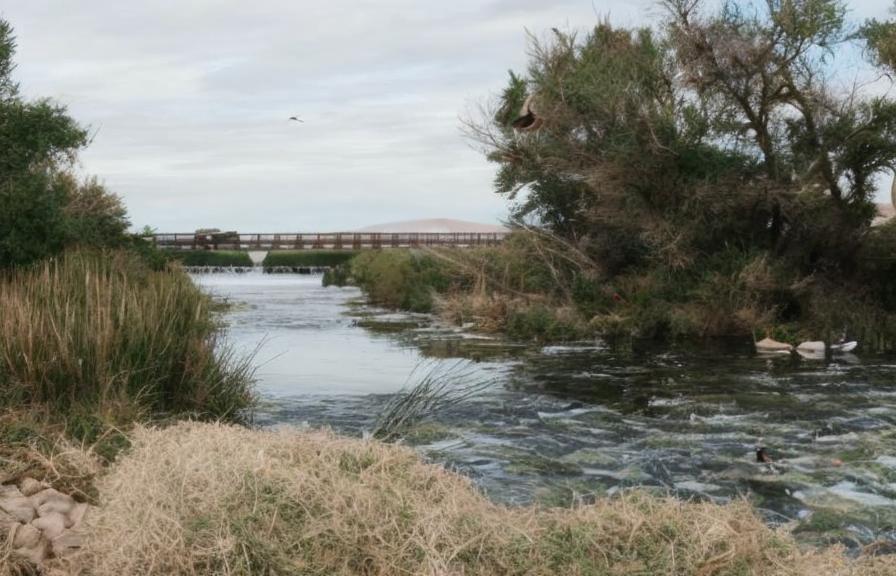
Effective management strategies for breeding areas focus on addressing threats such as habitat loss, pollution, climate change, and human disturbance to ensure the continued availability of suitable habitats for migratory birds. One key management approach is the implementation of habitat restoration projects that aim to rehabilitate degraded breeding areas by restoring native vegetation, creating nesting sites, and improving access to food resources for breeding birds.
Additionally, land-use planning and zoning regulations can help protect critical breeding habitats from development activities that could lead to habitat loss or fragmentation. By designating important breeding areas as protected zones or wildlife reserves, we can ensure that these habitats remain intact and undisturbed by human activities.
Furthermore, monitoring and research programs play a crucial role in assessing the health and status of breeding areas for migratory birds. By collecting data on population trends, reproductive success rates, habitat quality, and environmental conditions, we can better understand the needs of breeding birds and implement targeted conservation measures to support their long-term survival.
Overall, effective management strategies for breeding areas involve a combination of habitat restoration, land-use planning, protected area designation, and monitoring programs to ensure the continued availability of suitable habitats for migratory birds.
Future Challenges and Opportunities for Breeding Areas
The future presents both challenges and opportunities for breeding areas as we strive to conserve critical habitats for migratory birds. Climate change poses a significant challenge to the availability of suitable breeding areas by altering environmental conditions such as temperature, precipitation patterns, and food availability. Adapting to these changes will require innovative conservation strategies that address the impacts of climate change on breeding habitats.
Furthermore, increasing human populations and urbanization pose ongoing threats to breeding areas as development activities encroach upon important habitats for migratory birds. Balancing the needs of human communities with the conservation of critical habitats will require collaborative efforts between government agencies, conservation organizations, local communities, and stakeholders.
However, there are also opportunities to enhance conservation efforts for breeding areas through technological advancements in habitat restoration techniques, monitoring tools, and public engagement initiatives. By leveraging these opportunities, we can improve our capacity to protect and preserve critical habitats for migratory birds.
In conclusion, breeding areas play a vital role in the survival and success of migratory bird populations. By understanding the importance of these habitats, addressing threats such as habitat loss and degradation, implementing effective conservation efforts, and adapting to future challenges, we can ensure the continued existence of these avian species for generations to come.
If you’re interested in breeding migratory birds such as ducks, you may also want to consider the importance of providing suitable housing for your birds. A well-designed chicken coop, like the ones featured in this article on Poultry Wizard, can offer a safe and comfortable environment for your ducks to thrive. Additionally, understanding the dietary needs of different bird species is crucial. You can learn more about feeding geese and chickens in this informative article on Poultry Wizard.
FAQs
What is the area of breeding for migratory birds such as ducks?
The area of breeding for migratory birds such as ducks is typically in the northern regions of North America, Europe, and Asia. These areas provide suitable nesting and feeding grounds for the birds to raise their young.
What are some key features of the breeding areas for migratory birds?
Breeding areas for migratory birds such as ducks often include wetlands, marshes, and lakes with abundant vegetation and food sources. These areas provide the necessary resources for the birds to build nests, lay eggs, and raise their young.
Why are breeding areas important for migratory birds?
Breeding areas are crucial for the survival of migratory birds as they provide a safe and suitable environment for nesting and raising their young. These areas also play a vital role in maintaining the population of migratory bird species.
How do breeding areas impact the conservation of migratory birds?
Protecting and conserving breeding areas for migratory birds is essential for ensuring the long-term survival of these species. By preserving these habitats, we can help maintain healthy populations of migratory birds and contribute to the overall biodiversity of the ecosystems they inhabit.
What are some threats to breeding areas for migratory birds?
Breeding areas for migratory birds such as ducks are threatened by habitat loss, pollution, climate change, and human disturbance. These factors can negatively impact the availability of suitable nesting and feeding grounds for migratory birds, leading to population declines.
Meet Walter, the feathered-friend fanatic of Florida! Nestled in the sunshine state, Walter struts through life with his feathered companions, clucking his way to happiness. With a coop that’s fancier than a five-star hotel, he’s the Don Juan of the chicken world. When he’s not teaching his hens to do the cha-cha, you’ll find him in a heated debate with his prized rooster, Sir Clucks-a-Lot. Walter’s poultry passion is no yolk; he’s the sunny-side-up guy you never knew you needed in your flock of friends!


